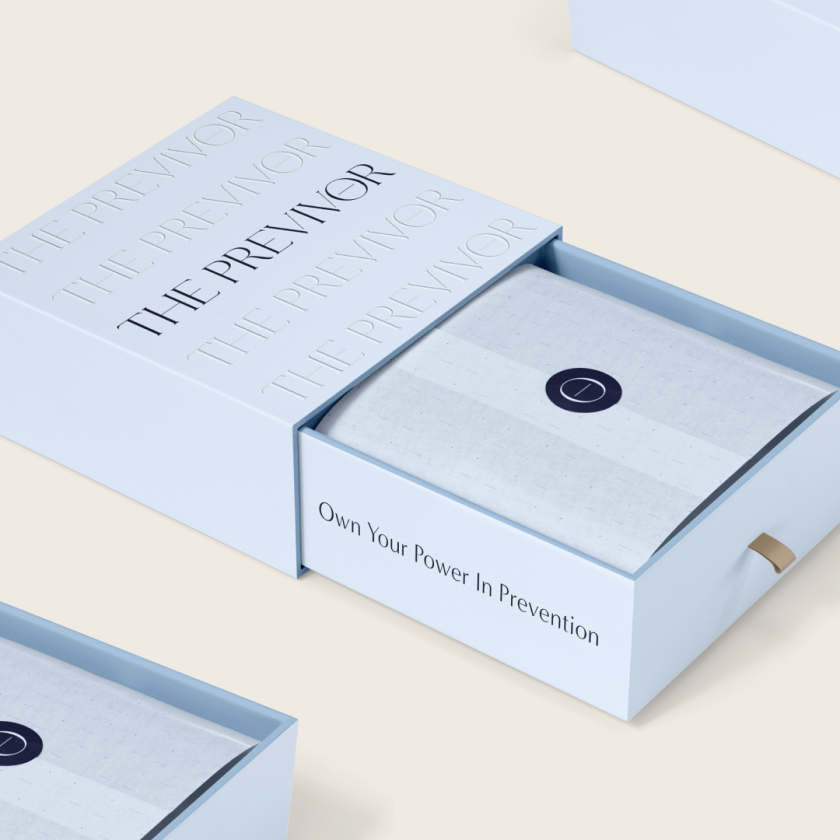Scout Lab crafts a compassionate brand for cancer prevention platform


Scout Lab’s rebrand for The Previvor replaces cold, clinical visuals with a soft, empowering design to support women making some of the most complex health decisions of their lives.
Designing for healthcare is about trust, clarity and care as much as it’s about aesthetics. Arguably, when the design brief involves not only information but emotion, identity, and life-altering choices, the stakes are even higher.
That was the challenge faced by creative agency Scout Lab when it partnered with The Previvor, a cancer prevention platform founded by Allyn Rose. After losing her mother to breast cancer and undergoing preventative treatment herself, Rose created The Previvor to offer resources, community, and support to women navigating similar journeys.
For Scout Lab, it wasn’t just about building a brand. It was about creating a sanctuary of understanding.
“The journey of a previvor is, at its core, about protecting life, yet it is too often treated in the language and aesthetics of disease,” says Willow Hill, Scout Lab’s chief creative officer. From the outset, the team rejected the cold, clinical look typically associated with healthcare and instead leaned into softness, emotional resonance, and human-first storytelling.
The result is a visual identity and website that are as intuitive as they are intimate.

Everything from the colour palette to the typography was chosen not just for how it looked but also for how it made users feel. Soft blues and muted blush tones replace the overly saturated pinks so often associated with breast cancer awareness.
Gentle curves and calming whitespace give users breathing room rather than visual overload. The tone of voice is plainspoken, supportive, and jargon-free.
It’s all underpinned by a singular goal: to empower women during one of the most personal and complex experiences of their lives.
“We wanted the brand to feel like a trusted hand, not a hospital brochure,” Willow explains. That meant approaching every element of the design system with empathy and what Scout Lab calls “emotional design decisions.” From micro-interactions and transitions to content hierarchy and copywriting, the team treated each layer of the experience as a moment of care.
The platform itself thoughtfully reflects this ethos. Designed to support emotional resilience and practical decision-making, the website structure prioritises clarity without sacrificing warmth. Resources are easy to navigate, support feels immediate and human, and crucially, the experience never talks at users—it speaks with them.
Typography plays a subtle but significant role here, pairing modern serifs with open sans-serifs to balance credibility with compassion. The layouts are modular and flexible, giving the platform room to grow while keeping the user journey streamlined.
“The visual system was built to inform and empower, and we wanted women to feel held and not overwhelmed,” says Willow.
That level of care extended to the brand’s symbolic elements, too. The logo – a circle intersected by a line – is inspired by Rose’s own surgical scar, turning a mark of loss into one of strength and survival. It’s a quiet but powerful gesture, grounding the identity in lived experience rather than abstract symbolism.

Throughout the process, Rose remained closely involved, guiding the team with her perspective as a survivor and advocate. “Her vulnerability, clarity, and vision made this work incredibly meaningful,” Willow adds. Her story made the work not only more personal but more purposeful.”
That sense of purpose is embedded in Scout Lab’s wider design philosophy. The studio, which focuses on human and planetary health, takes a systems-thinking approach to brand creation, designing not just for the way things look but for how they function in the real world. Whether working on sustainability projects or women’s health platforms, the goal remains the same: to create thoughtful tools that improve people’s lives.
In the case of The Previvor, that meant building a brand that could hold space for grief, courage, complicated decisions, and small moments of hope. It’s a clear example of how design can be more than just visual communication—it can be a form of care.
“We believe that design should improve lives and systems,” says Willow. “The Previvor gave us the opportunity to use design as a tool for care and connection, ensuring women feel equipped to make life-altering health decisions. That is what building for human health looks like.”







